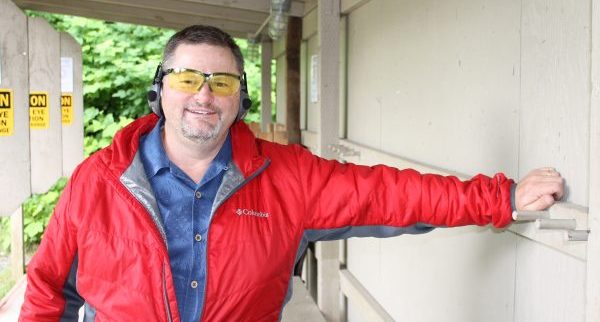
Attorneys for the Second Amendment Foundation and the senior editor of its publication, TheGunMag.com, have filed a renewed motion for summary judgment against the City of Seattle’s refusal to provide specific revenue information on the city’s so-called “gun violence tax” that contains a bombshell.
The tax has failed dramatically to live up to predictions. Not only is it far less than anticipated, it may be considerably “less than $200,000,” which was all the city would admit earlier this year.
Included in the court documents is a statement from Mike Coombs, owner of the Outdoor Emporium – one of two retail gun dealers who are plaintiffs in a separate lawsuit challenging the gun tax – that perhaps unintentionally provides a reason for Seattle’s reluctance to provide the information.
Apparently Outdoor Emporium is the largest single payer of the city gun tax, some 80 percent, according to an interrogatory from the attorney to the city.
INTERROGATORY NO. 11: Please state if there was any quarter or year in which one
taxpayer paid 80% or more of the total amount collected pursuant to the Firearm and Ammunition
Tax (SMC 5.50). If so, indicate for which quarter(s) or year(s) this was true.
ANSWER: Yes, for all periods.
Coombs, in his court statement said the following:
“I am aware that Seattle has publicly announced that it has collected less than $200,000 from the firearm and ammunition tax and that it has revealed in discovery in this case that one retailer has paid 80% or more of the total firearm and ammunition tax collected every quarter and for the entire year. When Seattle’s statements are compared with Outdoor Emporium’s $86,410.43 tax payment for 2016, it is mathematically certain that Outdoor Emporium is the retailer that has paid more than 80% of the firearm and ammunition tax.”
By simple math, according to the document, “If Outdoor Emporium paid at least 80% of the total collected for the firearm and ammunition tax, then it is likely that Seattle did not collect more than $108,013.04 ($86,410.43 / .80 = $108.013.04). This is $200,000 to $400,000 less than Seattle claimed it would make from this tax.”
When the “gun violence tax” was hastily adopted in 2015 under pressure from then-City Council President Tim Burgess, anti-gun Mayor Ed Murray quickly signed it and the city was immediately sued by SAF, the National Rifle Association, National Shooting Sports Foundation, Outdoor Emporium and Precise Shooter.
Burgess claimed at the time that the tax would bring in between $300,000 and $500,000 annually. In April 2016, TheGunMag.com – a monthly print and online publication that replaced Gun Week about four years ago – sought revenue information from the city for the first quarter of the year. The city, after some time, declined to provide the details on the grounds that it would violate the privacy of a handful of gun dealers who paid the taxes. Earlier this year, the city would say only that in all of 2016, it collected “less than $200,000.” It refused to be more specific.
The magazine contends that the public has a right to this information because of the controversial nature of the tax and the public interest it generated when adopted.
The city has reportedly not spent any of the tax revenue while the court challenge is in progress, so it took $275,000 in general fund money to finance so-called gun violence reduction efforts that ostensibly would be paid for by the tax revenue. This, say SAF and TheGunMag.com, makes it even more important that Seattle residents get the information because they are now all paying into this project through their taxes.
As Liberty Park Press noted earlier this week, the gun tax/violence reduction effort appears to be backfiring. According to KOMO in May, “The city has seen a 17 percent increase in the number of police calls about shots fired compared with last year.” At the time of that report, 35 people had been shot in Seattle, a 30-percent increase over the same period in 2016.
A check with the Seattle Police Department’s data through June 5 revealed that as of that date, there had been 185 shots fired calls, up from the 152 at the same time last year. There had been 41 shootings including 4 fatal and 37 non-fatal, up from the 31 shootings including 6 fatal and 25 non-fatal, for the same period last year.
Coombs told Liberty Park Press and TheGunMag.com earlier this week that there should be another concern for the city: sustainability. If the gun tax revenue disappears, how will the city pay for this “anti-violence” program? All taxpayers will be stuck with that bill.
He noted that the store has donated thousands of dollars’ worth of gun locks and made other efforts to promote firearms safety in the city over the years.
Coombs revealed something else that further damages the city’s adoption of this “gun violence tax.” His overall sales have declined 15 percent, meaning less B&O tax revenue to the city. His gun sales declined about 20 percent and ammunition sales plummeted by about 50 percent. He is now considering moving out of the city, which will cost Seattle even more in lost revenue.
He suspects that this was the city’s intention all along, to drive gun stores out of Seattle. Precise Shooter has already relocated to another location outside of Seattle.
If that is the case, then this wasn’t a tax revenue issue at all, but a thinly disguised gun control effort, which is what SAF, NRA and NSSF contend in their challenge to the tax as a violation of the state’s 34-year-old preemption act.